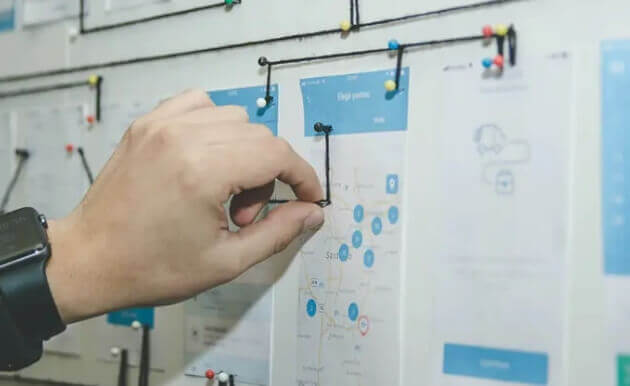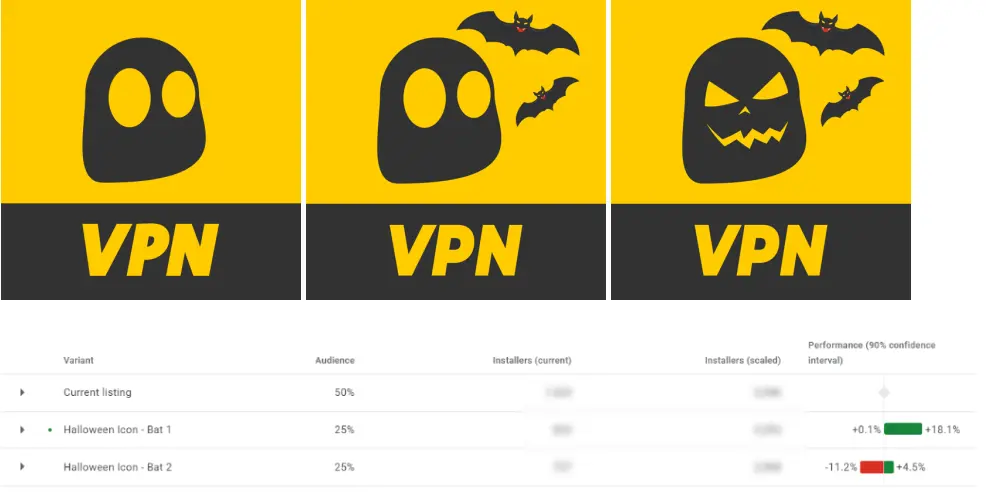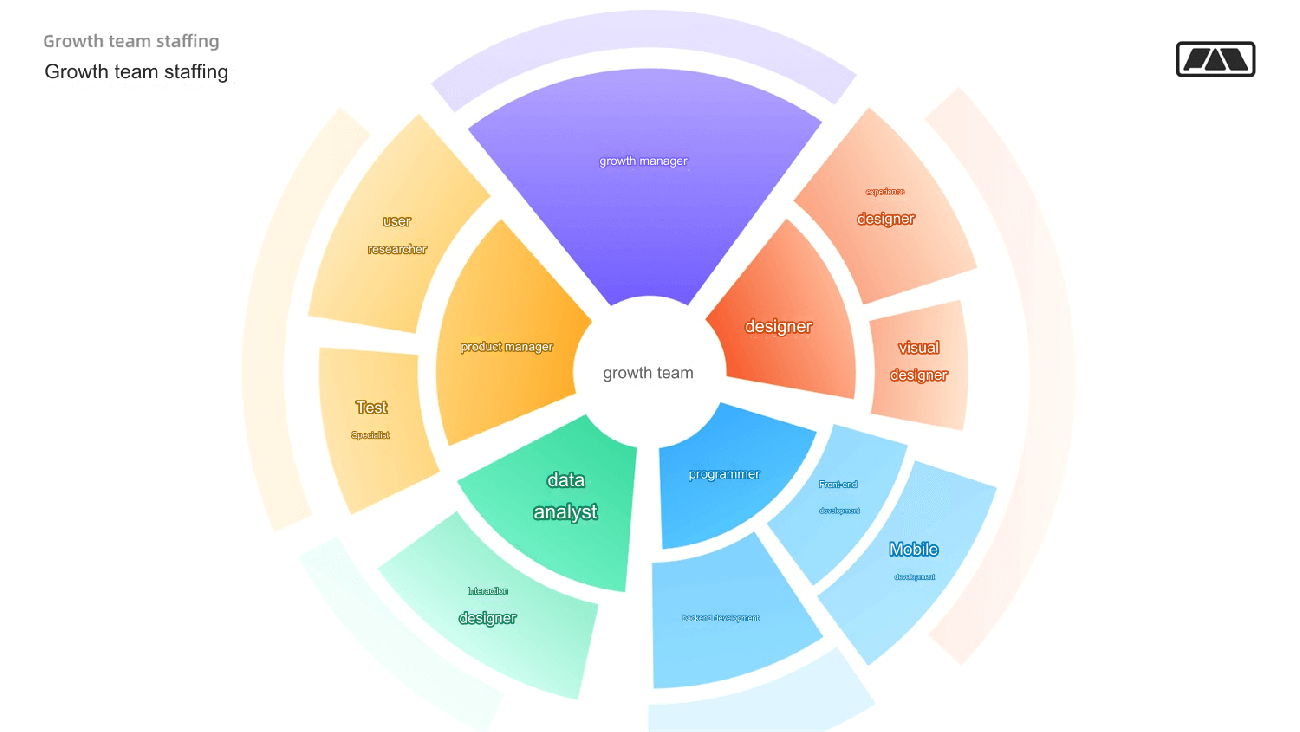Product managers play a crucial role in the product development process, and requirement analysis is one of the most critical aspects. This article delves deeply into the advanced path of requirement analysis for product managers, providing a comprehensive guide on how to conduct requirement analysis effectively.
Requirement analysis is the core process of product development. It not only defines the product’s goals and direction but also ensures the product’s practicality and market acceptance. By deeply understanding the real needs of users and the market, we can accurately define the product, avoiding inefficient investment, maximizing resource utilization, and ultimately creating a high-quality product that genuinely solves users' pain points.

Requirement analysis involves a comprehensive exploration and deep understanding of user needs, market dynamics, and business development strategies. It requires us to thoroughly explore users’ expectations, demands, and dissatisfactions, and then transform this valuable market intelligence into the product's unique selling points and practical functions. The importance of requirement analysis is reflected in several key aspects:
Accurate market positioning: It helps us find the right positioning for the product in a competitive market, ensuring that the product closely aligns with the core needs of the target audience.
Efficient resource allocation: By identifying critical requirements, we can allocate development resources more wisely, enhancing the efficiency of the development process.
Product iteration support: Based on user feedback and market performance, we continually optimize product features and user experience, ensuring continuous improvement.
Eliminating communication barriers: It ensures information symmetry between the development team and users, preventing product errors caused by miscommunication.
Strengthening risk management: By anticipating and addressing potential technical challenges and market risks, it safeguards the product’s stable growth.
Given the foundational role of requirement analysis in product development, we will explore this crucial process from nine dimensions, including understanding the project’s vision and goals. Through systematic methods and rigorous processes, we can better meet user needs, gain market recognition, and ultimately achieve commercial success with the product.
1. Understanding the Project's Vision and Goals
In the early stages of requirement analysis, understanding the project’s vision and goals is crucial. The project vision is a forward-looking outlook that defines the long-term goals and impact the project hopes to achieve. The project goals are specific, measurable outcomes that are steps toward realizing the vision.
1.1 Understanding the Project Vision
To understand the project vision, we can start by:
Engaging in deep conversations with the project initiators and key stakeholders, listening to and organizing their expectations and long-term vision for the project. This communication ensures that we stay on course and maintain the project's original direction.
Conducting thorough market research to observe industry trends and explore real user needs. Through market analysis, we can uncover potential opportunities for the project and clarify the value the project can bring to society and users.
Synthesizing the valuable information collected and the results of the market analysis to craft a clear and compelling vision statement. This vision not only guides our direction but also inspires the team’s enthusiasm and unites stakeholders to achieve the project’s success.
1.2 Defining Project Goals
When defining project goals, we strictly follow the SMART principle. This means that each goal we set is specific and clearly communicates the expected outcomes. These goals are also measurable, allowing us to evaluate progress and success with concrete indicators. Additionally, we ensure that the goals are achievable, neither beyond our capabilities nor too easy, providing a certain level of challenge to motivate the team.
We break down the grand vision into a series of specific, actionable goals. This approach not only helps us better plan the project’s path but also provides clear work directives for the team, ensuring that each member understands their role and responsibilities.
Finally, we emphasize the importance of consensus building. Through thorough communication and discussion, we ensure that all team members and stakeholders share a common understanding and agreement on the project goals. This consensus not only enhances the team's cohesion and execution but also lays a solid foundation for the project's smooth implementation.
2. Identifying Stakeholders
In requirement analysis, stakeholders are one of the key factors for product success. Correctly identifying and understanding them is crucial to ensuring the product proceeds smoothly. Stakeholders are individuals or groups who have a direct or indirect impact on, or are affected by, the product's outcomes. Understanding their needs and concerns helps ensure that the product meets everyone’s expectations.
2.1 Types of Stakeholders
In requirement analysis, identifying stakeholders is a critical task. The initiators are often the driving force behind the product, holding clear expectations for its outcomes. Beneficiaries, on the other hand, are those eagerly awaiting and benefiting from the product’s success. Their satisfaction is a key measure of the product’s success.
Executors, the unsung heroes, are responsible for the daily operations and execution of the product. Their efforts and collaboration are crucial to the smooth advancement of the product. We must also consider influencers, who may not directly participate in the product but whose opinions, attitudes, or actions can have a profound impact.
As product managers, understanding and effectively managing these stakeholders is key to ensuring the product’s smooth progress and eventual success.
2.2 Identifying Stakeholders
To ensure the smooth progress of a product, it is crucial to accurately identify and manage stakeholders. To achieve this, we need to use scientific methods.
First, through interviews, questionnaires, and workshops, we can gather specific needs and expectations from stakeholders comprehensively. This not only ensures we deeply understand their viewpoints but also supports the tailored implementation of the project.
Second, focus analysis helps us gain insights into the stakeholders' concerns and expectations for the project, including potential risks and opportunities. This forward-thinking approach allows us to preemptively address uncertainties in the project process.
Finally, balancing interests is an art. In projects, different stakeholders may have conflicting interests, so finding that optimal balance is crucial. This ensures the sustainability of the project while ensuring that all parties benefit.
3. Requirements Gathering
Requirements gathering is a critical step in the requirements analysis process. It involves identifying and documenting the specific needs of users and stakeholders. Requirements may come from multiple sources, including user feedback, market research, business objectives, etc. Effective collection methods ensure we obtain comprehensive and in-depth information.
1. Sources of Requirements
Requirements are the soul of product design, coming from various sources but collectively shaping the future of the product. User feedback is like frontline intelligence, direct and genuine, reflecting users' actual experiences with the product and their desired improvements. Market research, on the other hand, acts like a spotlight, illuminating potential opportunities, helping us anticipate needs that users may not have explicitly expressed in a competitive market.
Business objectives serve as the compass for product development, guiding product features and functionality to ensure they align with the strategic vision of the company or project. Regulatory requirements are the guardrails for product development, ensuring that our innovations push boundaries while remaining compliant with industry and legal standards.
As product managers, we need to keenly capture these sources of requirements and integrate them into the product, creating solutions that not only meet user expectations but also set trends in the market.
2. Methods for Requirements Gathering
Requirements gathering is the starting point for product design and is crucial in determining the product’s success or failure. Interviews, like an adventurer's journey, dive deep into users' minds to explore their real needs and expectations. Surveys act like a net that captures the voices of the masses, quickly and widely collecting opinions from different perspectives.
Observation, like a lurking leopard, silently and sharply captures every detail of user behavior in their natural state, revealing usage habits and potential needs. Data analysis, like a wise sage, interprets complex data to discover market trends and forecast future developments.
As product managers, we should flexibly use these methods, delve deep like adventurers, be as sharp as leopards, and analyze like wise sages. This will allow us to accurately grasp user requirements and create products that are both user-friendly and trend-setting.
4. Requirements Clarification
Requirements clarification is the essence of requirements analysis. It acts like a magical key that transforms surface-level solution-based requests from the business side into deeper problem-based needs. This transformation helps us to precisely understand the real drivers and goals behind the requirements, paving the way for us to create practical and effective solutions. When discussing the types of requirements, we need to distinguish between:
Solution-based requirements, often proposed by the business side based on intuitive perceptions, involve adjustments or additions to specific functionalities. They represent only the tip of the iceberg, showing just the surface of the issue.
Problem-based requirements are the deeper truths revealed after peeling back the layers and conducting in-depth analysis. These are the core issues hidden beneath the surface, and they form the foundation of product design. Only by accurately grasping these core issues can we create products that truly meet user expectations and solve real problems.
Methods for Clarifying Requirements
Clarifying requirements is a must-learn skill for product managers. Scenario analysis is like building a real stage, where factors such as time, location, and characters come together to play out the origin and development of the requirement, allowing us to fully understand the background and avoid omissions or misunderstandings.
Asking multiple “Why” questions is our secret tool, using the 5W1H (What, Why, Who, Where, When, and How) method to dig deep into each requirement until we reach the core. This approach not only helps us find the root cause of problems but also ensures that our solutions are targeted and effective.
Let’s not forget that user psychology is always our guiding compass. Understanding users' behavioral motivations and psychological needs is the key to unlocking their hearts. This key can help us uncover the real issues behind proposed solutions, making our products more aligned with users' needs and solving their actual problems.
5. Requirements Classification
Requirements classification is the process of systematically organizing the collected requirements, helping us better understand their nature and importance. Requirements can be divided into functional requirements, non-functional requirements, interface requirements, and data requirements.
Functional Requirements:
Definition: These are the features that the product must have to meet users' needs for completing specific tasks.
Example: An online shopping platform must have features like product search, adding items to the cart, and online payment.
Non-functional Requirements:
Definition: These involve aspects of the product such as performance, security, usability, and maintainability, without directly impacting the product's functional characteristics.
Example: An application must handle high concurrency to ensure smooth operation during peak user activity.
Interface Requirements:
Definition: These involve aspects of the user interface, including layout, design, and color scheme, which affect the user experience.
Example: A website must have an intuitive navigation bar and clear button layout to help users quickly find the information they need.
Data Requirements:
Definition: These involve the collection, storage, processing, and analysis of data, which is crucial for the product’s intelligence and decision-making capabilities.
Example: A data analysis platform must be able to process large volumes of data and provide real-time analysis reports.
6. Requirements Prioritization
Requirements prioritization is a key activity in project management that determines which requirements should be implemented first. This process involves evaluating multiple dimensions of requirements, including their value, cost, urgency, and more.
1. Dimensions for Evaluating Requirements Prioritization
Requirements prioritization is an important aspect of a product manager's daily work. When conducting prioritization, we should comprehensively evaluate from multiple dimensions.
First, the value of the requirement is a critical factor in determining whether it is worth allocating resources for its implementation. This encompasses user satisfaction, market potential, and alignment with overall strategy, all of which are important indicators for assessing a requirement's contribution to business objectives.
Second, we need to estimate the cost associated with implementing the requirements, including the necessary human resources, material consumption, and financial investment—these are practical issues that must be considered during decision-making.
Additionally, urgency is another dimension that cannot be overlooked. Responding promptly to high-urgency requirements ensures that our products and services remain aligned with market and user needs.
Finally, we need to analyze the dependencies between requirements to clarify the prerequisites for implementing certain requirements. This ensures that our work proceeds in an orderly fashion, avoiding resource waste. By considering these evaluation dimensions comprehensively, we can arrange work priorities more scientifically and reasonably, thereby enhancing the market competitiveness and user satisfaction of our products.
2. Methods for Requirements Prioritization
Requirements prioritization is a critical decision-making step for product managers. Among various methods, the Four Quadrants Method is highly regarded for its intuitiveness. It cleverly combines value and cost, dividing requirements into four quadrants, making high-value, low-cost requirements immediately apparent and naturally prioritized.
The MoSCoW Method categorizes requirements based on necessity, clearly distinguishing between “Must Have,” “Should Have,” “Could Have,” and “Won’t Have” categories, providing strong support for product managers to make informed choices under resource constraints.
The Weighted Scoring Method is even more comprehensive, allowing us to customize weights for each evaluation dimension and meticulously score each requirement. This quantifies the priority of each requirement, making the prioritization more objective and precise.
Each of these three methods has its strengths, and product managers can flexibly choose among them based on actual circumstances to ensure that every step of product development stays on the right path.
7. Product Solution Design and Review
Product solution design and requirements review are the processes that transform the results of requirements analysis into specific product features. The goal at this stage is to design a product solution that meets user and business objectives based on the established requirements priorities and to ensure the feasibility and consistency of the solution through PRD (Product Requirements Document) and review meetings.
1. Product Solution Design
Product solution design is the perfect combination of creativity and technology. Requirements transformation is the starting point, where we ingeniously convert high-priority requirements into unique features and practical functionalities of the product. Creative brainstorming stimulates the team's potential, encouraging members to propose innovative solutions to meet diverse market needs. Technical evaluation is the key to safeguarding the process, ensuring that our solutions are not only technologically advanced but also stable and reliable. Every step is meticulously refined to create an exceptional product experience.
2. PRD Document Writing
The PRD document is considered the soul of product design. It must detail the product's features, user interface, and operational processes while accurately correlating each feature to its underlying requirements to ensure no aspects are overlooked and that the design is purposeful. Clearly defined acceptance criteria are essential for ensuring quality, providing a solid foundation for subsequent testing and validation.
Writing the PRD is both a process of clarifying thoughts and a critical step to ensure that the product progresses steadily and robustly from concept to reality.
3. Requirements Review
Requirements review is a crucial part of product development. Through cross-departmental collaboration, we bring together the wisdom of product, design, development, and testing teams to examine every detail of the product solution. In in-depth discussions of the solution, we strive for consistency and completeness across all aspects, ensuring that the product is flawless.
At the same time, we value feedback from every team member, carefully integrating their insights to refine the product solution. This phase not only guarantees the quality of the product but also fosters teamwork and collaboration, laying a solid foundation for the product's success.
8. Requirements Scheduling and Follow-Up
Requirements scheduling and follow-up are key steps to ensure that product development progresses according to plan. After the requirements review, the project team needs to create a detailed scheduling plan and continuously follow up on design and development progress to ensure the timely delivery of a high-quality product.
1. Creating the Plan
Creating a requirements scheduling plan is a critical part of product management. First, we break down the grand product solution into specific development tasks and key milestones, ensuring that every step is clear and traceable. Next, we allocate team resources carefully based on the complexity and urgency of tasks to maximize efficiency.
Simultaneously, we estimate the time required for each task and build in buffers to handle potential risks. Such planning not only ensures the orderly progress of the project but also provides the team with clear direction and motivation.
2. Following Up on the Plan
Following up on the requirements plan is crucial. Through regular project meetings, we can stay informed about task progress, discuss encountered issues, and find the best solutions together. Additionally, by using advanced project management tools like JIRA or Trello, we can track task status in real time, maintaining transparency and accuracy of information. Effective communication and coordination are the foundation of team collaboration, ensuring we can quickly respond to challenges and keep the project on track. This follow-up mechanism undoubtedly lays a solid foundation for the successful launch of the product.
3. Change Management for Requirements
In the vast ocean of product management, change management for requirements is the compass that ensures the correct course and reasonable speed. Our goal is to build a change process that is both flexible and robust, ensuring that every adjustment to requirements undergoes careful evaluation and approval, making sure it’s both justified and necessary. Through detailed impact assessments, we can foresee and quantify the potential effects of changes on project progress, cost, and quality, enabling us to make informed decisions. Updating the schedule is our agile response to change, ensuring the project always moves forward along the optimal path. Together, we navigate the challenges of changing requirements, steering towards success.
9. Requirements Validation
Requirements validation is a critical step to ensure that the product meets the established requirements and user expectations. This process involves a series of testing and evaluation activities, both before and after the product launch, to verify the product’s functionality, performance, and user satisfaction.
1. Pre-Launch Validation
In the grand stage of product development, pre-launch validation of requirements is the decisive final act, determining whether the product will gain market favor. Functionality testing is our gatekeeper, ensuring that each feature strictly adheres to the requirement specifications and performs flawlessly as intended.
Performance testing acts as a strict coach, subjecting the product to various load tests to ensure it maintains stability and responsiveness even under pressure.
User acceptance testing (UAT) is the bridge that connects us with the users’ minds, inviting target users to personally experience the product and gather their valuable feedback and suggestions, making the product more in line with user needs and enhancing its market competitiveness. Let’s fine-tune every detail to ensure that every aspect of the product is in its best condition before launch.
2. Post-Launch Validation
Post-launch validation of requirements is a crucial part of the product lifecycle. It not only serves as an assessment of the product’s achievements but also marks the beginning of continuous optimization. Through data analysis, we can delve deep into user data to understand the product's actual performance and user behavior patterns, providing data support for product iterations.
User follow-ups allow us to communicate directly with users, capturing their real experiences and improvement suggestions through surveys and in-depth interviews, making the product more aligned with user needs.
At the same time, monitoring market feedback serves as a mirror, reflecting the product’s acceptance in the market and user satisfaction, guiding us towards areas for improvement. Together, after the product launch, we remain user-centric, continuously optimizing to ensure that the product maintains steady progress in the competitive market.
3. Continuous Improvement
Continuous improvement is the soul of product development, requiring us to remain user-centered and to constantly strive for excellence. Iteration and optimization are how we carefully nurture the product’s vitality, continuously refining the product based on post-launch validation results to achieve the ultimate user experience.
Agile responsiveness is our keen grasp of market trends, quickly absorbing user feedback and market dynamics, and flexibly adjusting product strategies to ensure that our product stays ahead of the curve.
The establishment of a long-term monitoring mechanism is our ongoing care for product health and user satisfaction. Through continuous monitoring and evaluation, we ensure that both product performance and user satisfaction steadily improve. Together, on the path of continuous improvement, we strive with craftsmanship to create products that stand the test of time.
10. Conclusion
Requirements analysis is the core of product development, directly influencing product market positioning, resource allocation, iteration optimization, and risk management. This comprehensive discussion has explored the entire process, from understanding the project vision to requirements collection, clarification, categorization, prioritization, solution design, review, scheduling and follow-up, all the way to requirements validation and continuous improvement. By using the SMART principles to clarify objectives, identifying key stakeholders, and adopting various methods to collect and clarify requirements, we ensure precise and efficient product solutions. The flexibility in handling requirements changes and the emphasis on continuous improvement throughout product management provide a systematic and scientific framework for requirements analysis for product managers. Mastering these techniques allows product managers to better meet user needs, gain market recognition, and achieve commercial success with the product.






